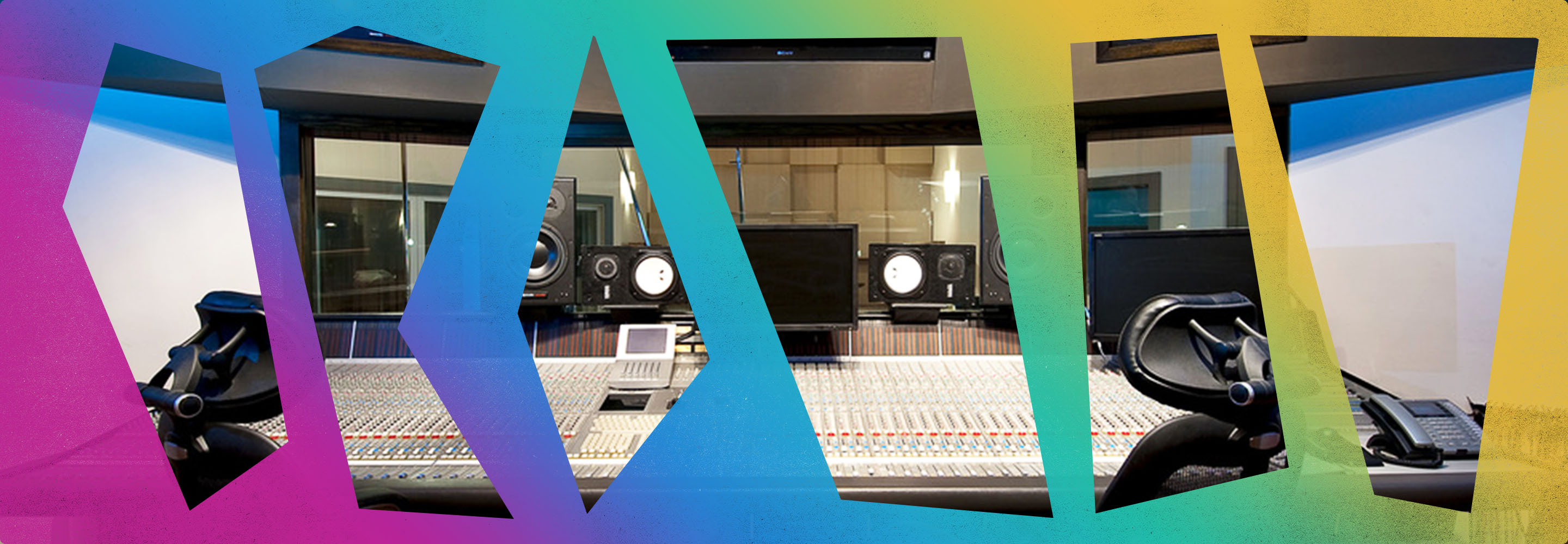
Mixing for Atmosphere: 6 Tips
The mixing choices you make drive the mood of your mix. In this article, we’ll cover six mixing tips to help you create the right atmosphere for your track.
Previously, we looked at production techniques for adding atmosphere to music. Think of this article as part two—I’ll touch on production, but mostly I’ll provide mixing tips for creating more precise moods and feelings in your mixes; those all-important atmospheric details that offer listeners something new with every play.
In this article, we’ll cover six mixing tips to help you create the right atmosphere for your track.
This article references a previous version of Neutron. Learn about 

Neutron 5
Just what does “atmosphere” mean, anyway?
Like so many mixing terms, it can be a struggle to assign a specific meaning to the word “atmosphere.” Many people use it interchangeably with words like “vibe” or “mood,” which have something to do with the overall feel and emotion a song evokes.
To me, atmosphere starts with instrument selection and recording techniques, as well as lyrical content and melodic choices. For example, the shaky singing voices and dark themes from Bright Eyes and Daniel Johnston quickly establish an uneasy atmosphere with little mixing required.
On the other hand, in a genre like dub, the laid back atmosphere can largely be attributed to the use of mixing techniques like trippy delays, echo effects, and carefree volume automation.
So we can think of “atmosphere” as a song’s capacity to paint a picture in the mind of the listener, to give them some frame of reference for what they’re hearing.
1. Save your big reverb for one track
When trying to impart a sense of atmosphere, reverb has many benefits. It can make a dry, acoustic guitar sound like it was recorded in a larger space, add softness to keys, lend an ethereal quality to vocals, and much more.
Because of these great qualities, many new engineers can make the mistake of adding reverb to everything in the mix, hoping to create an atmosphere. Sending a clap or snare into a big reverb will turn a track’s aggression up, but once you start processing guitars and vocals the same way, the mix will lose its edge. Simply put, too much reverb will only muddy the mix and make it harder for the listener to get a feeling of depth and space.
It’s best to save that one long, spacious reverb for a single element in your mix, and to keep other reverbs shorter and drier. This way, your listener will actually hear the reverb as an effect and get a sense of atmosphere from it.
2. Try a delay when reverb isn’t working
Reverb and delay aren’t all that different—they both create a delayed version of your original signal. However, you may find that reverb can become indistinct in mixes with many tracks and fast sequences of notes, making it hard to communicate any sense of atmosphere.
If you want to enhance the atmosphere of your mix, but reverb just isn’t cutting it, try a delay instead. You’ll find that the distinct repeats generated by delays can give the same sense of space as reverb, but without smearing sounds across the mix.
Choosing to turn delay on and off just to capture specific words or notes can be powerful too. And with the ability to time your delays to the tempo of your mix, as well as set different times and tunings on stereo plug-ins, you can use delay to create some interesting and spacious sounds that improve your mix’s atmosphere.
Listen to the example below. I’ve applied reverb to the guitar loop in the first section, and I’ve applied delay in the second section. Though it's a subtle change, the delayed high notes in the second part do a better job of enhancing the light and breezy mood, and don’t smear the guitar across the mix.
3. Play with the stereo field
If your mix has no panning, it’ll likely suffer from a number of issues: muddiness in the center, grooves that fall flat, and an overall restricted feeling to that sense of space you’re trying to express. This is no help for creating an atmosphere.
The soundstage of the world we live in is not unidirectional. We hear sounds all around us, so why not introduce some of this liveliness into the mix? Have a listen to the loop below, and be sure to pay attention to the drum fills. In the first section, there is no panning. In the second, I’ve scattered the snares and cymbals around the stereo field.
Taking the playful guitar and bass as a cue, the panned snare enhances the upbeat energy and gives the loop some more pep. Not all atmosphere has to be brooding and dark. No matter the mood you’re going for, intentional panning will help you enhance it.
4. Improve your mix’s timbre with spectral shaping
Sculptor, a spectral shaping tool in


Neutron
You can use Sculptor on an instrument level, place it on a stereo bus, or even strap it to the entire mix and process a specific band of frequencies. Watch some excellent and atmospheric examples of how it all works in the video below:
5. Incorporate field recordings—but don’t just stop there
It's a common practice to layer textural sounds like vinyl crackle and field recording ambience over a track for a warm feel, or to fill out some of the empty space within a mix. This is a good idea, but all too often I hear what sounds like the same 10-second clip copied and pasted without any editing throughout an entire song.
A simple way to give these extra textural sounds some more movement is to sidechain them to another element in the mix. This can be either sidechain compression, causing the texture to duck when certain elements play, or sidechain expansion or gating, causing the texture to play along with an element in the mix.
With either method, the texture will ebb and flow with the music, as opposed to just running over it. Listen to the difference in the audio file below—the first part has no processing, and in the second part, the crackle is sidechain compressed to the keys, so it swells in the places when the keys sustain.
Hear the difference? Without this, the atmosphere the crackle provides is quickly diluted. But in the second section, the crackle moves between the background and the foreground, allowing the musical elements to be heard while keeping the atmosphere intact. Setting the sidechain compression input to the snap provides a more rhythmic, pumping feel.
6. Keep automation in mind
Movement is critical when creating atmosphere for your mix, and automation is the best tool for this, as it allows you to squeeze extra emotion from sounds over time. Doing this lets listeners know they’re listening to music by a human, not a computer—even if the computer is doing all the slider riding!
On synths and digital instruments, simple moves like altering tuning, timing, and filter frequency go a long way. On live instruments like guitars, vocals, and pianos, try automating sends to create swells and other unique atmospheric effects.
Here’s a simple audio example that uses volume automation to add atmosphere to the mix. The first section has no processing, and the second uses automation to pull up the volume level of reverb between each chord, pushing listeners forward with a swell.
Conclusion
By now, you should have a better understanding of atmosphere, and how to create or enhance it in your mixes. Use the tips provided in this article as a starting point for more complex experiments, like automating the intensity of Sculptor over time, pitch-shifting subsequent delay repeats down a semitone, or further integrating field recordings into mixes with sequencers and samplers. Happy mixing!


